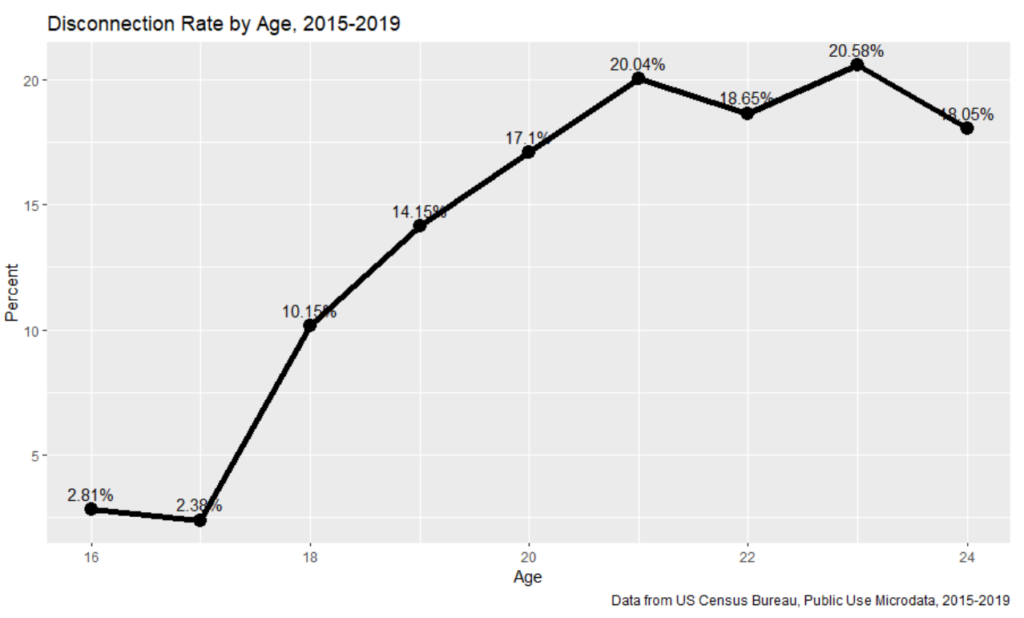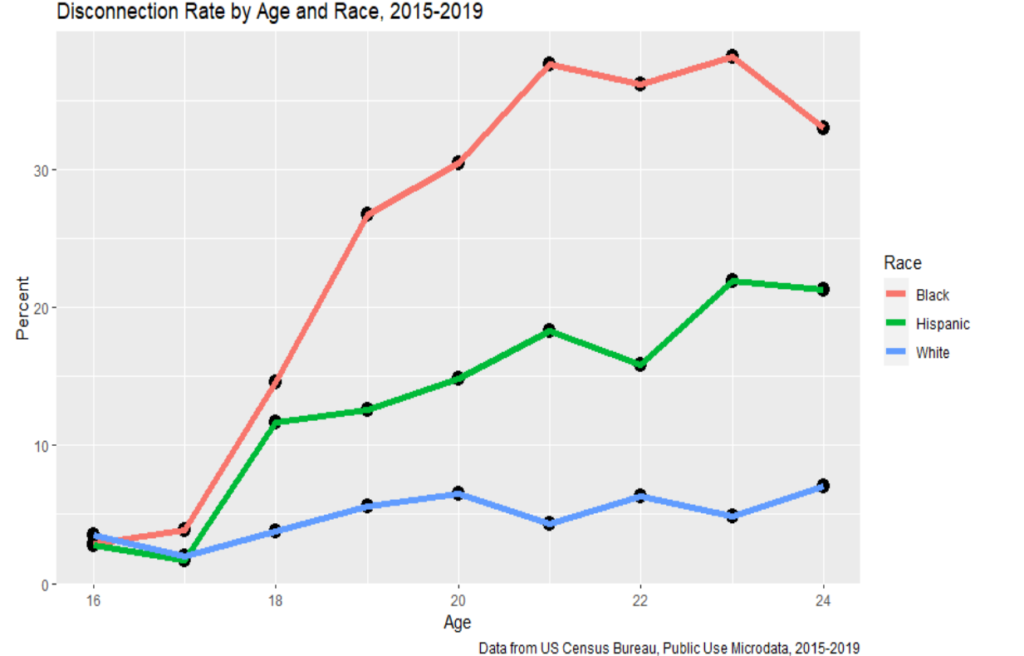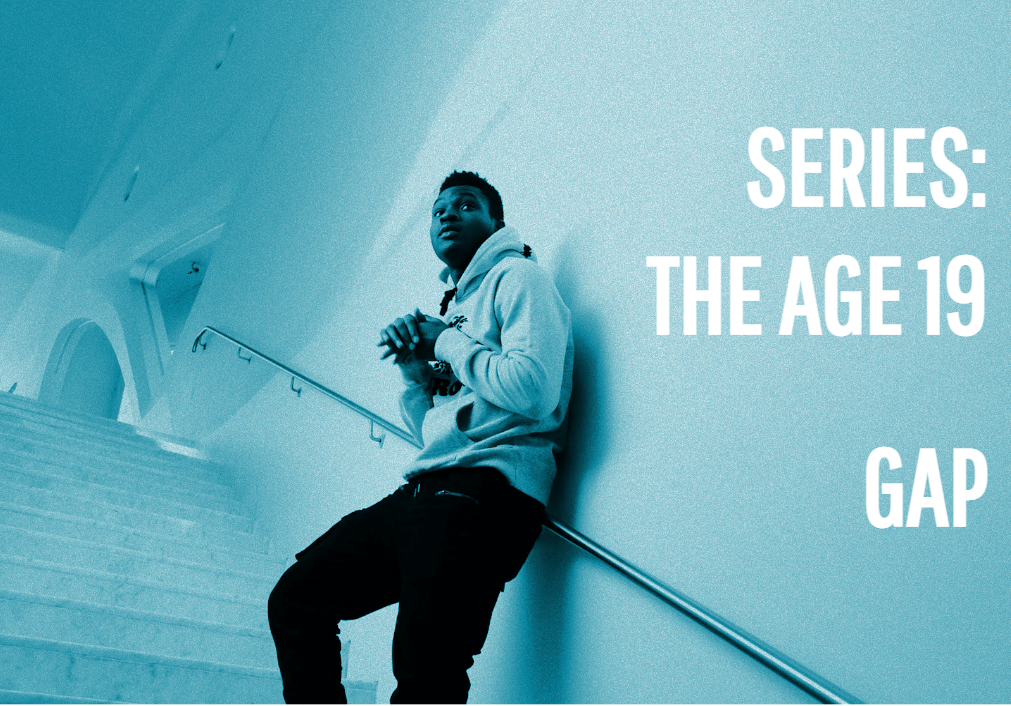Turning 18 is a major milestone. You are on the precipice of a great transition – graduating from high school and embracing your future. For some, this means college or travel or getting a job. It is a first taste of independence – leaving home for the first time to discover the new adult version of yourself. For others, it is an abrupt disconnection from the familiar structures, resources, and social safety net that provided security, comfort, and opportunity.
For too many young people in our city, turning 18 is more a source of anxiety and loss than an opportunity. As of 2019, more than 12% of youth in Chicago are disconnected from school and employment. Age 18 represents the rapid increase in disconnection rates from less than 3% at age 17 to more than 10% at age 18 and continues to climb to more than 20% by age 21. The COVID-19 pandemic also served to further highlight inequities in our systems. While more recent data is not included in the graph, we know that disconnection rates increased for most subgroups of youth during the pandemic. So, the size of the gap is likely larger than that illustrated in the graph due to the increased strain on systems and the increased demand for supports around the transition to adulthood.

Youth are generally in a similar spot at ages 16 and 17 regardless of race. By age 18 we begin to see that Black and Hispanic youth become disconnected at much higher rates than white youth. A second divergence begins to emerge by age 19, as more than 25% of Black youth are disconnected, more than 10 percentage points higher than Hispanic youth and 20 percentage points higher than white youth. By age 21, 38% of Black youth are disconnected from education and employment.

Over the next several months, Thrive will release a series of blog posts exploring the Age 19 Gap. We will provide an overview of the challenges that young people face that lead to initial and, often, persistent disconnection, and the ways in which the current systems facilitate this disconnect by cutting off resources at critical periods. Specifically, we will explore the ways in which race and gender affect disconnection rates and the implications for potential solutions, with a focus on boys and young men of color. We will incorporate youth and community perspectives, and explore questions about how youth think about success and what supports they need to reach that level of success, and how systems need to change so that they can become successful.
The Age 19 Gap represents an astounding failure of our systems in supporting our youth of color that requires our collective attention and collaborative action. We believe these blog posts will lay the foundation for designing systemic solutions.




